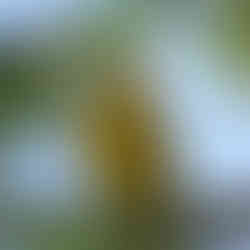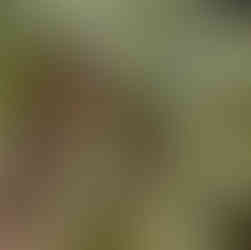Spring Birding around Salwa, Act Two
- saudibirding
- May 1, 2021
- 7 min read
Yesterday morning and another super early start to arrive to Salwa just after sunrise. This time I was by my lonesome as my primo birding companero, Adam Harris, is preparing to quit the Kingdom for good in just a few days—we're going to miss you 'round here, bud.
After the excellent birding we had there three weeks ago, I was curious what a return visit might turn up. Are Yellow-throated Sparrows just passing through the Eastern Province or might they nest in the big mesquite trees around Salwa? Arabian Green Bee-eaters have been seen in Qatar. What if they're also occurring in the agricultural areas just over the border? Discovering them Saudi side would be a first for the EP. Then, of course, there's the matter of the francolins. The spot where Adam and I discovered Grey Francolin on April 9 just might be the only place they're currently occurring in Saudi Arabia. As I only managed audio recordings last time, this time I was hoping to get photographs, which would be the first of the species from Saudi in god knows how long and might allow us to determine to which subspecies this population belongs. According to the Birds of Saudi Arabia, there was a small population further north between Dhahran and Jubail, which appears to have disappeared, with a single record from the Berri Gas Plant in Jubail in 2019, representing the first in 15 years. A population that far to the north would have likely originated from birds in Bahrain, a population which surely had to have been introduced to the island kingdom and may be one of the more easterly subspecies common throughout India—F. pondicerianus interpositus and F. pondicerianus pondicerianus.
As the farms where Adam and I discovered them are a stone's throw from the border with Qatar and the nearest sighting there less than 10 kilometers away, it's very likely that this population originated from the Qatar population, rather than the population in the UAE, which has been expanding its range westward since the mid 1990s (see this article from the Environmental Agency - Abu Dhabi, 2005). The increase in cultivated areas and roadside ornamental plantings in the western region of Abu Dhabi is what is believed to have facilitated the species' expansion across the emirate; however, no such roadside plantings exist on the Saudi side and the nearest cultivated area from the border with the sort of trees the francolins favor is over 80 kilometers away in the village of Nebak. All that's between—barren, sandy desert and vast sabkha flats. I checked another large farm and nearby village close to Salwa three times, a distance of only 12 kilometers from where we finally did find them, and none have yet to be detected. The 4 kilometer-wide sabkha flat between the two locations, which is totally devoid of cover, might be the main feature to the land inhibiting their further spread in the area. The birds in Oman and the UAE originated from F. pondicerianus mecranensis, the westernmost subspecies, which occurs from south Pakistan through southern Iran—just across the Strait of Hormuz from southeast Arabia. If the population in Qatar arose through introductions and not the product of possible range expansion from the UAE, then there's the question of to which subspecies the Qatar birds belong and is this the same subspecies now occurring near Salwa.
I arrived to the farms just past 5:30 AM and was pleased to discover they had cleared the road of the drifting sand dunes that were nearly blocking the road when Adam and I first visited the area. Rolling down the window I could hear the francolins vocalizing to either side of me. I headed straight to the spot at the north farm where Adam and I first encountered them. As I neared a camel enclosure, the big animals shifting nervously as I approached, I noticed four Grey Francolin foraging among the droppings just beyond the camels. I paused to take some distant shots, just in case this would be my only opportunity, and then moved forward slowly. The francolin didn't wait for me to get closer and soon had disappeared. A familiar alarm call drew my attention to a pair of Red-wattled Lapwings, which were also foraging nearby, as they flew out of sight around to the back side of the farm.
From the enclosure, I made my way to the scrubby, overgrown corner with the thick mesquite trees where Adam and I found Yellow-throated Sparrow the last time. Here I found a slight different cast of characters than that of our previous visit—there were several Spotted Flycatchers, a couple of male Eurasian Golden Orioles could be heard singing from inside the farm, a Hume's (Lesser) Whitethroat (S. curruca althaea), my third for Saudi, flitted about silently in the low shrubs, and Lesser Grey Shrike, another late spring migrant, was hunting beetles. In fact, I found a beetle earlier with a beak-shaped puncture in its hard wing-case. All the while I could hear the francolin calling around the farm; however, it was only as I made my way back to the car to explore the other side that I spied another from a distance, foraging on a sandy bank beneath one of the mesquite trees. Rufous-tailed Scrub-Robins had not diminished in numbers from our last visit and the males were just as busy singing and defending territories.
On the other side of the farm, after shooting video of a lovely male Namaqua Dove in the full flush of the breeding season, I found a couple of francolin walking beneath a row of trees a shorter distance away than the previous encounters. This was to be the best chance for photographing them, though the distance and their skittishness made it less than ideal. I also wanted to get better audio recordings than the ones from the previous visit, so I paused for a time with my gear and waited for a chance. As luck wouldn't have it, the two, which had vocalized a couple of times when I first came upon them, had grown quiet. At that moment, a Eurasian Sparrowhawk rose up out of the center of the farm and circled above me briefly, crop full with breakfast, and then flew west. Before leaving, I saw a striking male Whinchat tussling with a Spotted Flycatcher over turf, the former furiously chasing the latter from perch to perch. Thankfully the Whinchat obliged a mini photo shoot before getting back to the business of hunting.

After leaving the north farm, I drove a short distance to the east into the "village" proper, of which all that remained were three small compounds amid the ruins of several other buildings. Just a kilometer further on was the Qatar border and a few low sandstone mountains with border patrol outposts on top. I made a brief stop here to check out a much smaller farm, ringed by large, shaggy tamarisks and thick mesquite trees. In the center of the farm was a small date plantation, set in sand, and nothing more. Despite being quite close to the other two farms, there were no francolin here and I suspect it's on account of the sand. The trees did harbor some nice migratory birds though, including Willow and Olivaceous Warblers, Common Redstarts, and Eurasian Golden Orioles. A flock of European Bee-eaters were hunting out over the plantation. As it was getting hot, birds were coming in to drink at the loose falaj system set up to water the date palms, including a female Black-eared Wheatear.

Finally I drove over to the south farm, where Adam and I added quite a few more migrants and encounters with the francolin during our previous visit. The number and diversity of birds in the farm were less this time; however, some of the francolins were making their presence known, giving me a chance to get a few more audio recordings before making my way towards home. Pied, Northern, and Isabelline Wheatears were still moving through along with Western Yellow Wagtails, Tree Pipits, and White-throated Robins. I found a Tawny Pipit drawn into the heart of the date plantation in search of a drink and a little shade, and a second Lesser Grey Shrike perched inches from a female House Sparrow and looking as if wondering if it'd be quick enough to catch her. Back out by the road, I added an Upcher's Warbler to the trip list.
I had intended to stay longer in the area and try to explore new spots, but the temperature rose quickly and I figured the birding would not be ideal elsewhere. On the way home though I made two quick stops—one at the large farm closer Salwa I've searched before for francolin and one at the park along the beach in Salwa. I spent around fifteen minutes at the farm and listened for francolin. Nothing. Owing to the higher temps bird activity in general had slowed quite a bit. At the park, however, loads of migrants were seeking refuge from the sun in shade cast by the various plantings and structures throughout the space. I spied some movement in a short tree just inside the park's perimeter and found eight Willow Warblers all perched together in the shade of its small crown. Small gatherings of other species had formed under some of the structures, including an incongruous grouping of Lesser Grey Shrike, Isabelline Wheatear, and Rufous-tailed Rock-Thrush with a few of House Sparrows, all escaping the pounding rays of the Arabian sun. Only a Red-backed Shrike seemed to have some hunt left in it, scanning the grass for something to pounce on. The beach was fairly empty aside for a few Kentish Plover. A tiny little flash of movement beneath a tree along the beach caught my eye. It was a plover chick, looking all the world like a few dirt-smudged cotton balls glued to a pair of adult-sized legs. Shorebird chicks are precocial, which means they're able to run shortly after hatching. However, when a parent's around sometimes they'd rather hide out under a wing until the coast is clear.






























Comments